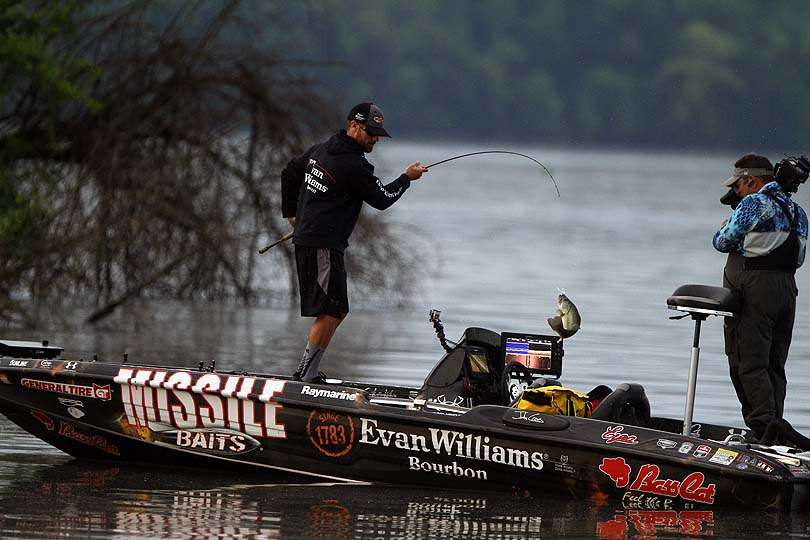
Plastic baits look simple enough. But like a lot of simple looking things there’s a ton of work behind every good one. Understanding a little about that work will help you pick the right bait for the conditions at hand and will result in more bass in your livewell.
In addition to fishing the Bassmaster Elite Series I own and operate Missile Baits, a soft plastics focused company. We use injection molding exclusively. That’s a process by which liquid plastic is injected under pressure into an aluminum, multi-cavity mold.
You can also hand-pour soft plastics. Some of them are really good, some not so much. I’m not going to say any more about them than that because they’re not how we make our baits. I will say, however, that some hand-poured baits can do things injected baits can’t do. Overall, injected baits can have many more options and are the way to go for mass producing baits.
One of the first things to consider when choosing a plastic bait is whether it’s harder or softer. Harder plastics have their place. They work well in saltwater and in high heat environments like the tropics. That said, I can’t think of a situation in bass fishing when I’d use one.
For our purposes, softer baits have much better action and they have better function. Too soft can be a problem, but they need to be soft enough to function properly. Function is how they fish. How do they move in the water? Can you rig them so that they don’t hang on every cast and, at the same time, allow you the opportunity to get a good hook set?
Before we get any deeper into function let’s talk about action. Creature baits illustrate its importance about as well as anything.
There has to be at least a thousand of those critters on the market, but only a handful of them actually look like something that lives where the bass lives. What the good ones really look like is something that’s alive and that’s vulnerable. Bass are predators. They attack creatures that act like prey.
Look at our D Stroyer, a popular bait in this category. You can say that it looks like any number of things. Some guys say it’s a dead ringer for a big crayfish. It might be. But for my money it looks like a frog swimming in the water, a frog that’s going to be easy prey. In all honesty, none of us knows what a bass thinks when it sees one. All we know is that they want to eat it. That’s enough for me, and for the other anglers who fish it.
You’ll hear a lot of talk about color around the dock. Color can be added to injected plastics in a number of ways to create a number of looks. The most common are solids, two layer laminates, three layer laminates, swirls and contrasting tails. With only a few exceptions, color choices and combinations in plastic baits are unlimited.
My preference in most situations is a two layer laminate. Most creatures in nature, especially those that live in the water, have two basic colors to their body, one darker on top and another lighter on the bottom.
Despite what I just said keep something in mind. Action is 100 times more important than color — in any lure. Color might get them to look, but it’s action that’ll get them to bite. Remember that.
Next time we’re going to talk about function. All the action in the world — even if a specific bait drives bass insane — are worthless if that bait doesn’t have function.

